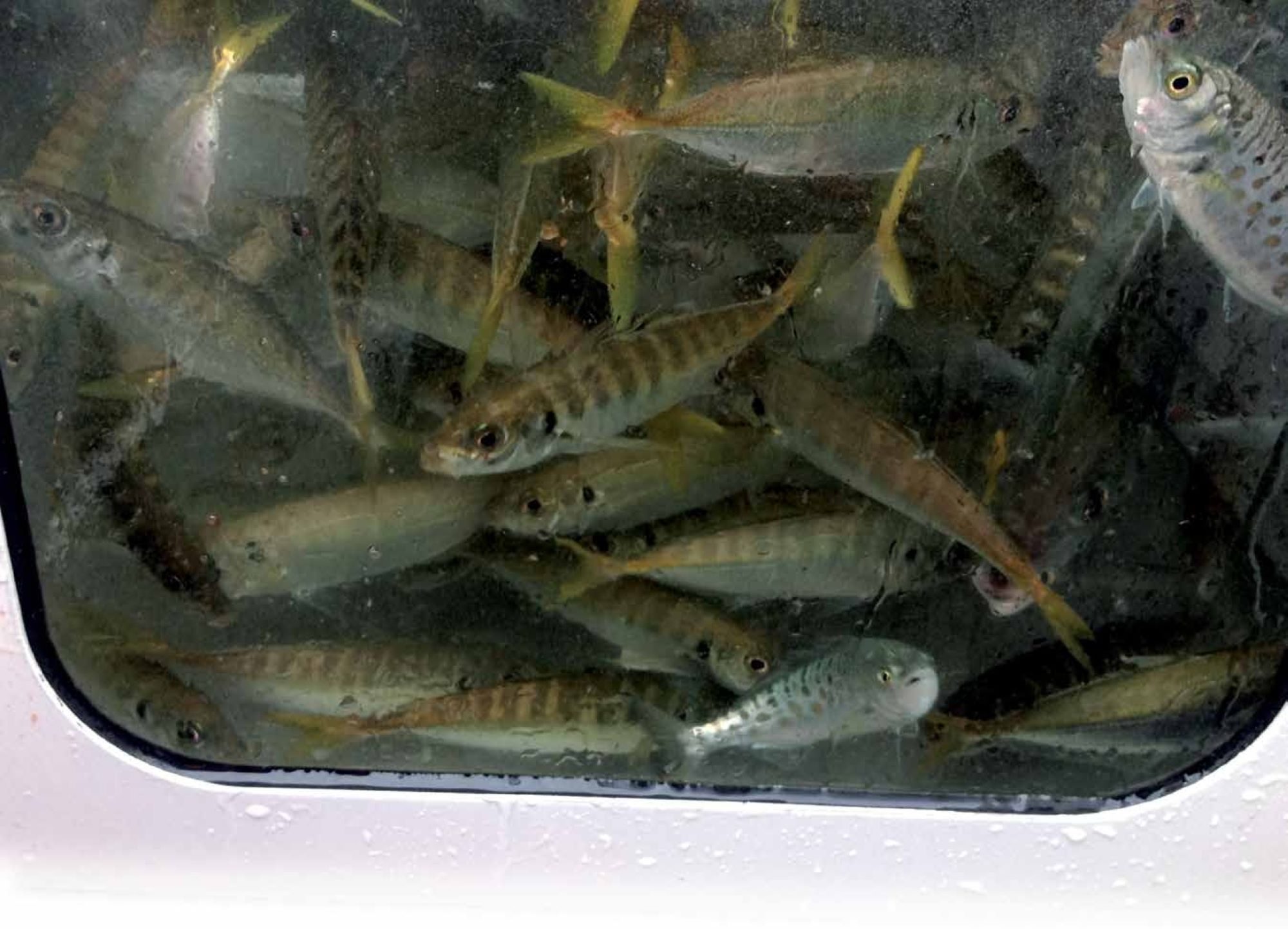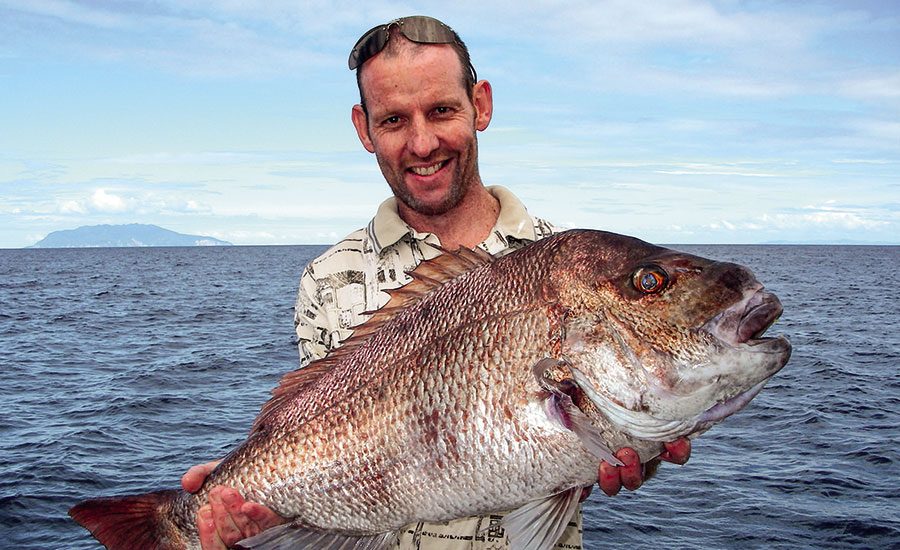

Dead baits might not be quite as effective as live baits, but there are ways to impart an illusion of life to them that fish find hard to resist.
There’s no doubt about it, a small, obviously injured fish moving erratically and flashing crazily is hard to beat as bait. To a hungry predator it presses all the right buttons.
But live baits can be difficult to catch or in short supply, so you’d better have alternative tactics up your sleeve.
How about bringing dead baits ‘back to life’?
Imparting movement to your baits is often the key to attracting bites. That’s why it pays to hold your rod and ‘work’ dead baits rather than leaving the rod in the rod holder.
‘Working’ the bait can mean actively taking up slack line to maintain contact as the bait trundles back towards you in the current, or perhaps lifting and dropping the bait regularly to reposition it – a worthwhile ploy when fishing amongst weeds and rocks. Moving the bait not only attracts attention, your offering might also end up better positioned.

SQUID BAITS
We will start with reanimating squid, as these cephalopods have plenty of natural wriggle, especially their tentacles. Indeed, take away the tentacles and the boxy squid body gets only a fraction of the bites.
Keep tentacles top of mind when cutting whole squid into smaller baits. For example, try pinning a tentacle clump on a single circle hook (diag 1), or if the tentacles are big, cut off one or two and hook them through the thick end. These baits can be used on ledger rigs or free-sliding sinker/stray-line rigs. Any movement imparted by either the angler or the current gets the tentacles undulating in a lifelike way.
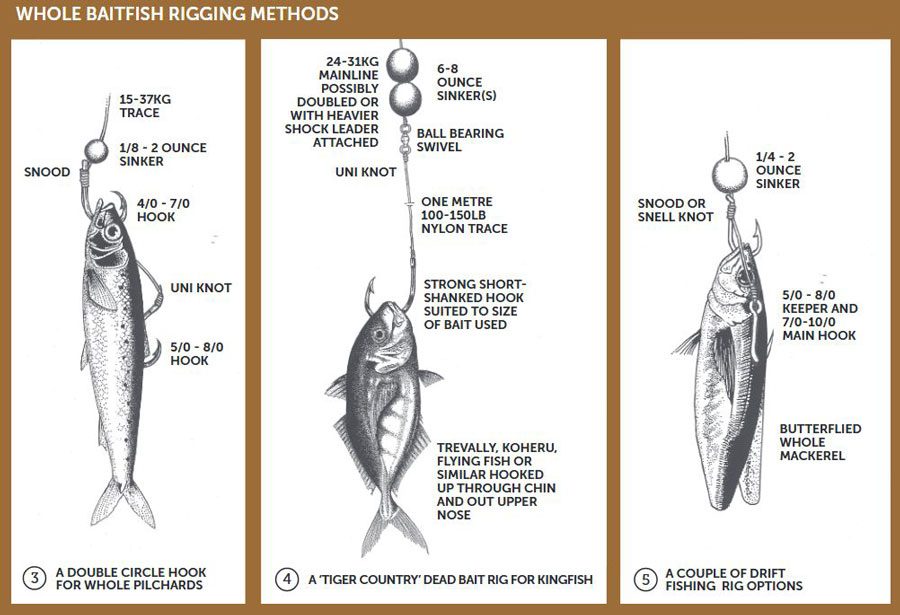
Indeed, it’s possible to create an almost soft-bait-like presentation by placing a small, free-sliding ball or bean sinker directly on top of a single hook trailing a large squid or octopus tentacle. Cast it out, allow it to sink to the bottom, and then slowly jiggle it back to the boat or shore.
But what happens once all the tentacles are used up, leaving just a pile of bodies? No worries, just get a sharp knife and cut thin ‘tentacles’ into the squid mantles (diagrams 2a and 2b). In addition to creating a more attractive-looking bait with added wiggle, the knife exposes more squid flesh and releases extra scent. Change baits regularly as squid scent and flavour washes out relatively quickly.
WHOLE BAITFISH
Or you can use whole, dead baitfish such as mackerel, pilchard or piper. But to get these baits moving attractively requires good rigging. While whole fish baits offer more anchorage points for your hooks when rigged tail-first – useful for thawed, relatively soft baits – rigging baits head-first gives them a more natural presentation (diagram 3).
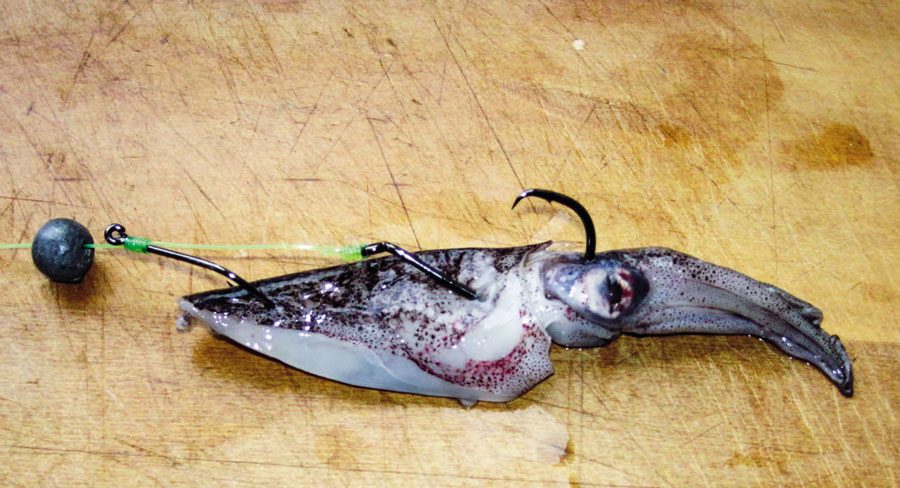
They move better, too, and natural streamlining means they don’t hold up in the current like tail-first baits. Headfirst baits snag less often in reefy areas and their more natural-looking presentation makes hooking a kingfish on the retrieve more likely – to deliberately target kingfish, try winding in the bait in a slower, more erratic manner.
A casting/free-spool reel outfit works better for this fishing style. Although mastering free-spool casting takes practice, the ability to leave the reel in free-spool while fishing offers a huge advantage.
By flicking the reel’s spool with a finger, you can impart jiggling movements to the bait while slowly retrieving it at the same time. Or lift the rod and then release line from the spool so the bait wafts back towards the sea floor in an enticing manner. To predators it looks just like a fish in its death throes.
Better still, when a snapper, kingfish or kahawai bites, it can run off with the bait with minimal resistance from the line – until, that is, you deem the time is right to engage the reel and strike!
Limbering up the bait can help, too, especially if it’s movement that is making fish commit to biting. Gently bend the bait back and forth to make it supple – that way it will have more action as it is moved. (Note: Don’t try this with pilchards as they don’t take the rough handling.)
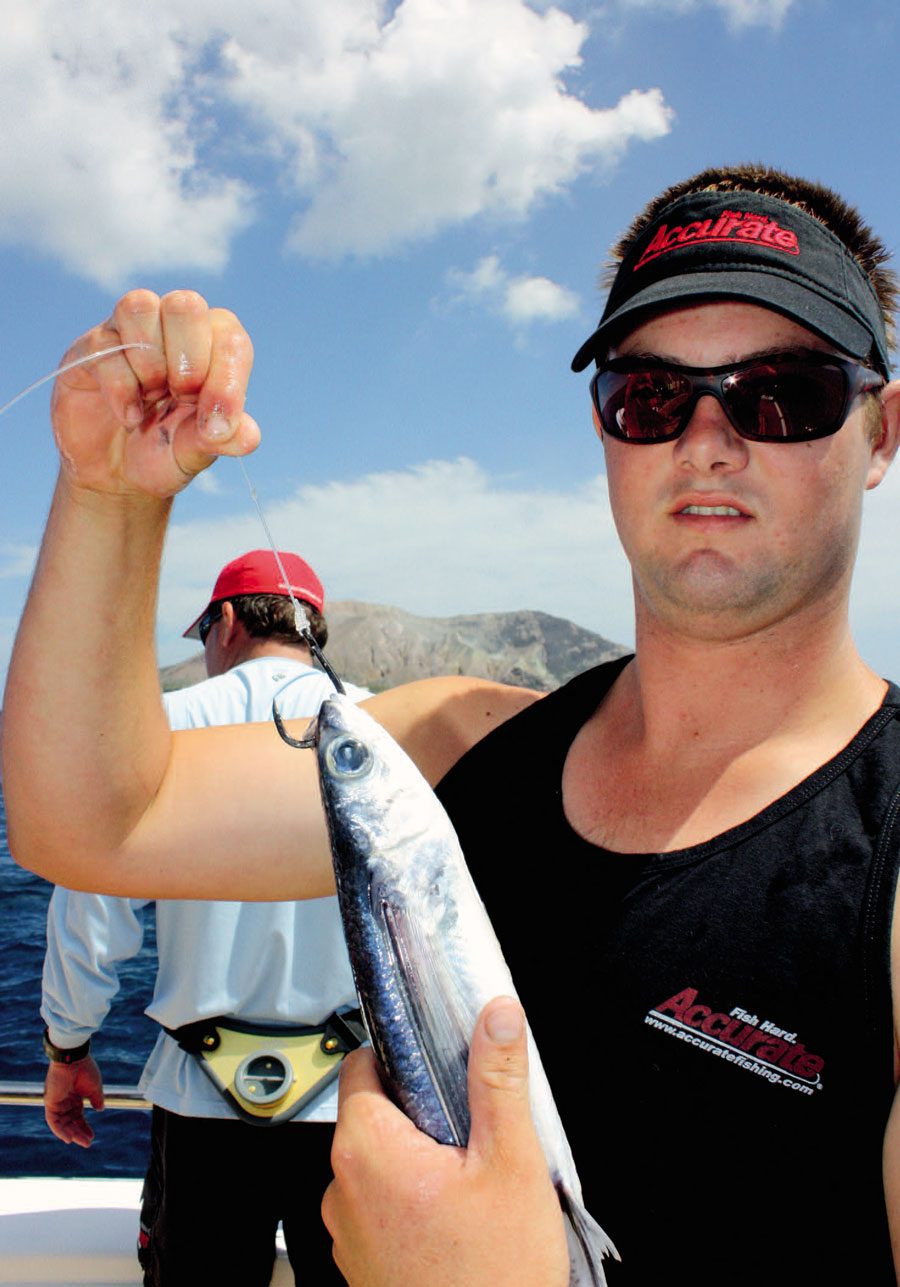
Kingfish are a prime target for this dead-bait fishing technique. It’s possible to target them using piper, mullet and mackerel – or kahawai, trevally and skipjack tuna. These firm baits (except for skipjack) are more effective if limbered up before rigging (diag 4).
But no matter how flexible, whole fish baits should be hooked through the middle of the head to ensure they move naturally – a baitfish descending through the water in a slow spiral doesn’t wag the tails of many predators.
So, take care when pushing a hook vertically through the top of the bait’s skull and out its chin, or horizontally across its bony ‘nose’. If the hook placement is off-centre, the bait will not move well.
To target kingfish with your well-rigged, limbered-up baits, try drifting over areas in 20-100 metres of water known or likely to hold kingfish.
Whether fishing for kingfish or snapper, the basic technique is the same. Drop your dead offering to the bottom, wind up three to five metres, flick the reel into free-spool and use light finger pressure to control the spool (with a spinning reel, open the bail arm and hold the line gently between your fingers).
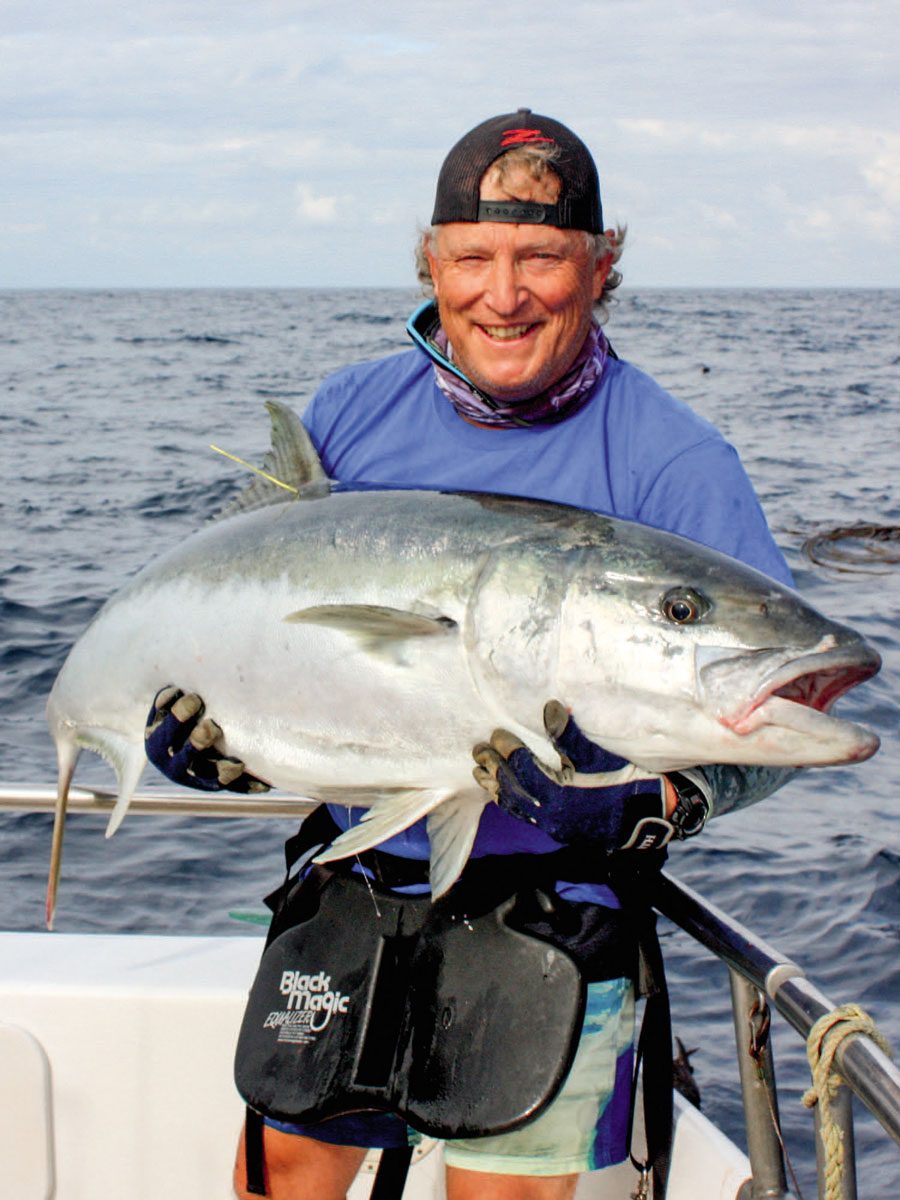
No bites? Slowly lift and drop the rod, or wind in a bit of line. Be prepared to release line, too, if you feel hard thumps or any extra pressure.
Unless they are especially hungry, kingfish (and snapper) typically grab and drop the bait a time or two before making up their minds to eat it (or not). If the initial grab isn’t followed by a stronger bite/run, lift the rod to give the bait some ‘life’– or try a short retrieve… or maybe drop the bait back a bit. Any of these tactics can encourage kingfish (and snapper) to eat a dead bait.
BUTTERFLIES & FLAPPERS
Still not having any joy? Try butterflying your snapper baits or turn your kingfish baits into ‘flappers’.
Both these baits are treated in a similar fashion, with both sides of the body filleted from the tail, leaving the flesh attached at the head end. Just how far up you go up the body is a personal choice.
Most anglers then remove the backbone and tail, leaving a head trailing a couple of scent-laden and very mobile fillets (diagram 5). They work really well! BNZ



